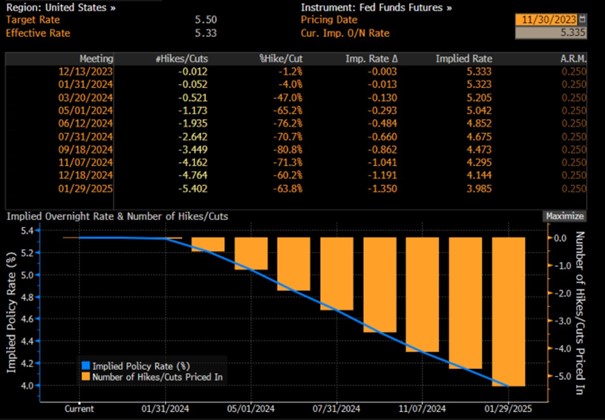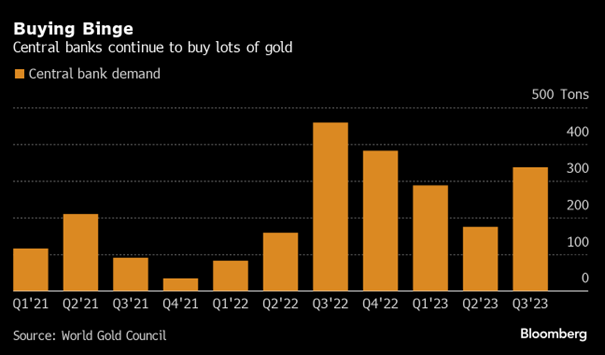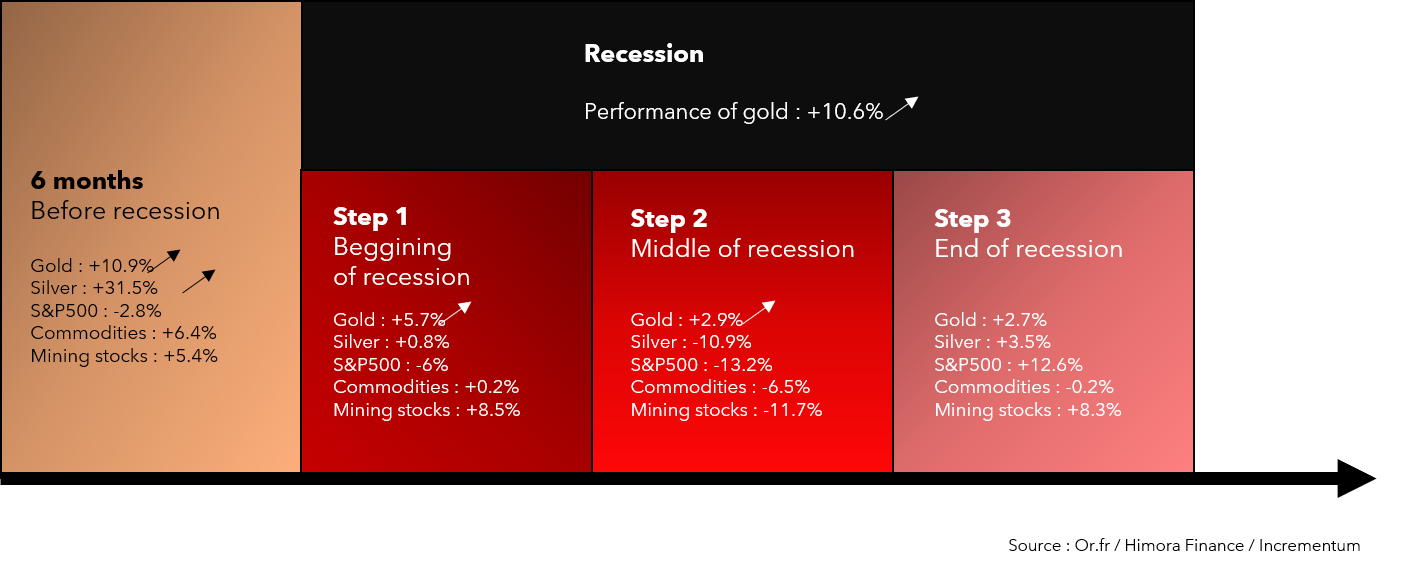
 Projected interest rates Central banks are gold lovers!Central banks have significantly increased their gold reserves this year. According to the World Gold Council, countries bought 337 tons in the third quarter of 2023 after accumulating 175 tons in the second quarter, an amount that exceeded the initial estimate of 103 tons.This massive acquisition of gold, mainly led by China, Poland, Singapore and undisclosed purchases, brings total purchases for the first nine months of the year to 800 tons. This buying frenzy has not only supported gold prices, which recently topped $2,000 an ounce but has also helped to offset investor selling amid global monetary tightening.
Projected interest rates Central banks are gold lovers!Central banks have significantly increased their gold reserves this year. According to the World Gold Council, countries bought 337 tons in the third quarter of 2023 after accumulating 175 tons in the second quarter, an amount that exceeded the initial estimate of 103 tons.This massive acquisition of gold, mainly led by China, Poland, Singapore and undisclosed purchases, brings total purchases for the first nine months of the year to 800 tons. This buying frenzy has not only supported gold prices, which recently topped $2,000 an ounce but has also helped to offset investor selling amid global monetary tightening. Central Banks’ demand for gold Why are central banks buying gold?Central banks around the world are turning to gold to strengthen and secure their financial reserves.This strategy aims to diversify their assets and reduce dependence on traditional currencies, which are unfortunately prone to volatility and inflation. Recognized as a safe haven in times of economic uncertainty, offers unique stability thanks to its intrinsic value and its history as a store of value going back thousands of years. The growing popularity of gold reflects the search for financial security and the desire to hedge against global economic uncertainties.The subject of recession is not over yetThe prospect of a recession could begin to cause concern on the stock markets, while at the same time providing a significant advantage for gold.In fact, indicators of manufacturing activity show data consistent with previous recessionary phrases. Moreover, households are being strangled by ever-increasing interest payments. In times of recession, gold tends to outperform other assets statistically, making it a potentially attractive choice in this context.
Central Banks’ demand for gold Why are central banks buying gold?Central banks around the world are turning to gold to strengthen and secure their financial reserves.This strategy aims to diversify their assets and reduce dependence on traditional currencies, which are unfortunately prone to volatility and inflation. Recognized as a safe haven in times of economic uncertainty, offers unique stability thanks to its intrinsic value and its history as a store of value going back thousands of years. The growing popularity of gold reflects the search for financial security and the desire to hedge against global economic uncertainties.The subject of recession is not over yetThe prospect of a recession could begin to cause concern on the stock markets, while at the same time providing a significant advantage for gold.In fact, indicators of manufacturing activity show data consistent with previous recessionary phrases. Moreover, households are being strangled by ever-increasing interest payments. In times of recession, gold tends to outperform other assets statistically, making it a potentially attractive choice in this context. Gold’s performance during a recessionConclusionAt the time of writing, gold is approaching its all-time highs. Although the $2,000 barrier seems hard to break, it will be worth keeping an eye on gold, which makes it a prime asset in a context close to recession. This is all the more relevant given that bonds, which are generally included in balanced portfolios, are more volatile than gold. This observation also comes at a time when valuations are hardly attractive.More By This Author:
Gold’s performance during a recessionConclusionAt the time of writing, gold is approaching its all-time highs. Although the $2,000 barrier seems hard to break, it will be worth keeping an eye on gold, which makes it a prime asset in a context close to recession. This is all the more relevant given that bonds, which are generally included in balanced portfolios, are more volatile than gold. This observation also comes at a time when valuations are hardly attractive.More By This Author:
Gold, The Asset Of Choice In Recessionary Times?

